
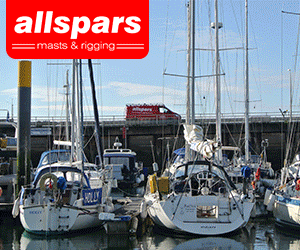

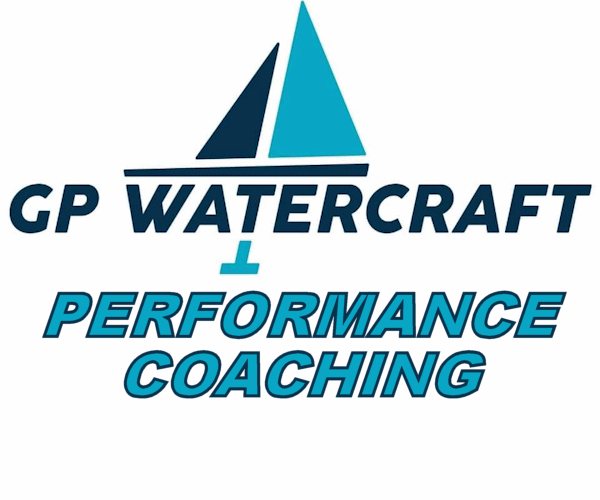

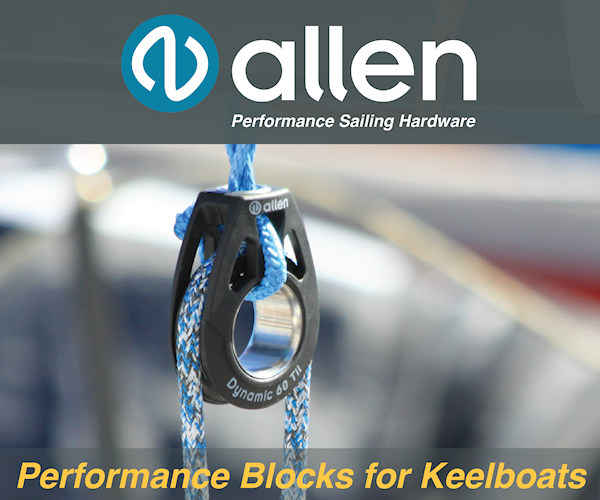




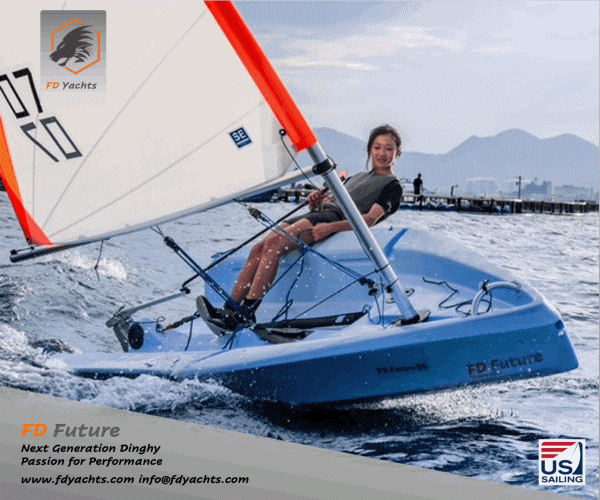

Boats for sale
| Laser 28 - Excellent example of this great design Hamble le rice |
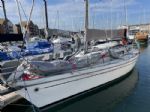 |
| Rossiter Pintail Mortagne sur Gironde, near Bordeaux |
 |
| Laser 140101 Tynemouth |
 |
List classes of boat for sale |
How to Stop |
Post Reply 
|
Page 12> |
| Author | |
tomjv 
Newbie 
Joined: 27 Aug 17 Location: somers,ny Online Status: Offline Posts: 16 |
 Post Options Post Options
 Quote Quote  Reply Reply
 Topic: How to Stop Topic: How to StopPosted: 07 Aug 18 at 8:26pm |
|
Here's my beginner question. I've been sailing dozen times or so. I sail a Zuma and an Argo. Sailed a Quest once too. I think I'm doing great; having fun sailing all over the lakes; starting to do a little hiking too! Never capsized yet.
My biggest problems are rigging and stopping in the wind. The situation - I launch from a boat launch ramp and dock setup. This area is generally downwind. So, standing on the dock looking lake-ward, the wind is in your face. Rigging- I find it a real challenge to raise the mast and especially to raise the main under these conditions. The water is wavy, and has the boat bobbing up and down. The boat leans and the boom swings. Then the wind gets into that main sail. I have the main sheet slack and the jib furled, but it doesn't seem to care. I'm usually exhausted by the time we shove off. Once off, I'm good. Stopping - Stopping is even worse. I'm talking about a moderate wind; no whitecaps or anything, but a decent sailable wind. I tried the "Hold-two" thing in the Sail-A-Boat videos, thinking I'd drop the main quickly and sail the jib back to the dock. I keep a paddle on board too. 1. It works OK for about 30 seconds. Then the wind hits the bow of the Argo and turns it right around until the main sail fills. Then I'm in real trouble, having half my rigging slack. Now the wind is coming across the beam and the boom hits the stays, so it can't even luff. 2. Once the main was dropped, we couldn't get the jib to move us by itself, for some reason. We changed the venue to a protected launch with a sandy beach and have had a much easier time. I actually had to paddle her out, but it was worth it. Still, what am I doing wrong? TomJV |
|
|
TomJV
|
|
 |
|
Rupert 
Really should get out more 
Joined: 11 Aug 04 Location: Whitefriars sc Online Status: Offline Posts: 8956 |
 Post Options Post Options
 Quote Quote  Reply Reply
 Posted: 07 Aug 18 at 8:37pm Posted: 07 Aug 18 at 8:37pm |
|
Sailing off a Lee shore is hard, so I doubt you are doing anything wrong, it just takes practice. Dropping the main, stream the halyard out the back of the boat so it won't catch on anything, and the sail will come down quickly. The battens catch on the gnav, so make sure the sail is slightly on the side where it stays free. Provided you are directly upwind of where you want to go, the jib will get you there. Let the jib blow the bow round once the main is down,by pulling it out so it fills backwards, aim the boat to shore and off you go.
|
|
|
Firefly 2324, Puffin 229, Minisail 3446 Mirror 70686
|
|
 |
|
tomjv 
Newbie 
Joined: 27 Aug 17 Location: somers,ny Online Status: Offline Posts: 16 |
 Post Options Post Options
 Quote Quote  Reply Reply
 Posted: 07 Aug 18 at 11:32pm Posted: 07 Aug 18 at 11:32pm |
|
HA! Those pesky battens! You got THAT right.
TomJV |
|
|
TomJV
|
|
 |
|
JimC 
Really should get out more 

Joined: 17 May 04 Location: United Kingdom Online Status: Offline Posts: 6662 |
 Post Options Post Options
 Quote Quote  Reply Reply
 Posted: 08 Aug 18 at 8:22am Posted: 08 Aug 18 at 8:22am |
|
It sounds as if it might be worth practising sailing with just the jib up. You should be able to manage up to a beam reach, thereafter its very dependant on the boat, but the boat handles very oddly until you're used to it. Maintaining speed is key as you get off a run.
You might want to investigate putting the main up before you get in the water. Its often impractical, but if you have a really long line on the trolley you can sometimes push boat and trailer in the water bow first, and float the boat off sideways. But you must have that really long line to retrieve the trolley, because if it slides down the ramp too far a bad day is guaranteed. Once you can sail well off a run with just the jib you can then go looking for a handy mooring buoy or something to hook up on for a couple of minutes. Getting the mainsail down with the boat tied to a buoy is less stressed and way easier than getting it down with the boat in motion. Just don't forget to have a long painter and loop it round the buoy and back to the boat so you can just untie it at the boat to let go. |
|
 |
|
tomjv 
Newbie 
Joined: 27 Aug 17 Location: somers,ny Online Status: Offline Posts: 16 |
 Post Options Post Options
 Quote Quote  Reply Reply
 Posted: 08 Aug 18 at 3:34pm Posted: 08 Aug 18 at 3:34pm |
|
Thanks for the info,
Always Appreciated! Just a couple Q's: What does "get off a run" mean? FWIW, I was trying to sail (jib only) with the wind at my back. I've never tried raising the main on land. I guess, because I usually launch off a car. Mooring - the mooring sounds like a good idea. Maybe I can carry a small anchor or sorts. Anything that keeps me pointed into the wind would be great. TomJV
|
|
|
TomJV
|
|
 |
|
JimC 
Really should get out more 

Joined: 17 May 04 Location: United Kingdom Online Status: Offline Posts: 6662 |
 Post Options Post Options
 Quote Quote  Reply Reply
 Posted: 08 Aug 18 at 4:05pm Posted: 08 Aug 18 at 4:05pm |
|
By get off a run all I mean is sailing on a broad reach, not directly downwind. Once you are sailing on something approaching a beam reach with just the jib it feels really odd, because you'll need the tiller pushed well to leeward just to sail straight, but it will work. The key is patience, because it takes the boat a long time to get going, and if you loose speed time to build it up again.in order to sail reasonably across the wind you'll need to build up some speed first.
Edited by JimC - 08 Aug 18 at 4:10pm |
|
 |
|
423zero 
Really should get out more 
Joined: 08 Jan 15 Location: United Kingdom Online Status: Offline Posts: 3420 |
 Post Options Post Options
 Quote Quote  Reply Reply
 Posted: 08 Aug 18 at 6:35pm Posted: 08 Aug 18 at 6:35pm |
|
I have been sailing from and to a Lee shore for 10 years, when I first started I tried all sorts of things, most successful was sailing in backwards, I now just sail in without even thinking about it, a boom push is easiest way to leave but you need someone on shore.
|
|
 |
|
Sam.Spoons 
Really should get out more 
Joined: 07 Mar 12 Location: Manchester UK Online Status: Offline Posts: 3401 |
 Post Options Post Options
 Quote Quote  Reply Reply
 Posted: 08 Aug 18 at 8:02pm Posted: 08 Aug 18 at 8:02pm |
|
I usually sail in and round up in the shallows but that is off a sandy beach (called "Sandy Beach" in a fit of madness ;) )
|
|
|
Spice 346 "Flat Broke"
Blaze 671 "supersonic soap dish" |
|
 |
|
ColPrice2002 
Far too distracted from work 
Joined: 25 Nov 08 Location: United Kingdom Online Status: Offline Posts: 222 |
 Post Options Post Options
 Quote Quote  Reply Reply
 Posted: 09 Aug 18 at 5:56pm Posted: 09 Aug 18 at 5:56pm |
|
HI, Welcome to the fun of sailing:- Rigging - Argo The Argos I've used have a jib furler fitted (it's in the beam under the jib tack, consists of a drum with control line wound on it. Head of the jib is a swivel fitting, pull on the control line - cleat just under the mast beam - and the jib will win up around the jib luff). Setting up the Argo I find difficult - you need to get the jib luff really tight (2 person job really!), then untie the forestay from the front and tie it out of the way (it fouls the jib furler if you don't!) Ok, Furk the jib, turn the boat on trolley head to wind and raise the mainsail. For launching you'll want little drive, so pull the outhaul on lots to flatten the sail, no tension on the Gnav. Add the rudder, then walk the trolley into the water (taking all the precautions mentioned above) until the boat floats off. You're probably up to your waist by now... If you have help, 1 person holds the boat head to wind, other person takes trolley ashore. If not, you may be able to manage holding the boat and pull the trolley at the same time. Otherwise, the small anchor/grapnel is an excellent way of stopping the boat going anywhere while you recover the trolley. Choose the best direction to start, walk aboard (over the stern!), and sail off gently lowering the centreboard and rudder as the water gets deeper. Once you have control, ease the mainsail outhaul and add some tension to the Gnav. When happy, release the jib furler, tug on the jib sheets and away you go. (tie the jib sheets ends together for single handed sailing). Stopping. Practice well away form the shore as follows:- a) sail on a close reach (about 70 degrees into the wind) b) release jib and let the mainsail out as far as possible the mainsail shouldn't be pulling - if it is, turn a little more into the wind. You'll stop (eventually) with the wind blowing over the side of the dinghy. To get going again, just pull the sheets in. (stopping head to wind works as well, but is harder because you'll star blowing backwards...) You can use this technique to land almost anywhere (or come alongside another boat, jetty, buoy, man overboard). if you're coming downwind onto a lee shore, aim about 5-8 boatlenghts to one side, then "lie to" as above. Alternatively, you can drop the mainsail - 1) choose a nice spot, clear of obstuctions 2) furl the jib (the boat will want to turn into the wind) 3 (as above) stream the main halyard over the side of the boat (stops it making knots) 4 turn head to wind with the wind on the port side (the Gnav is just to the left of the sail track, you want the sail to blow away from this as it comes down - reduces the batten problem!) 5) drop mainsail. 6) unroll jib, and back it to help turn the dinghy downwind. Aim for the landing spot, at a suitable distance. roll the jib, release the rudder downhaul raise the centreboard (not all the way) and drift in. The disadvantage of this method is that you are totally committed to the landing. With the first method, you can always sail away and go for plan B, Plan C etc. From what you're writing, you would find one of the RYA Courses (Level 3 - better sailing or Seamanship skills) helpful. I suspect that you may have to travel! Anything unclear, please come back - our local sail training centre has Argos and I can always take a few photos. The Zuma isn't popular in the UK, but it looks like a number of smallish dinghies. Regards, Colin |
|
 |
|
tomjv 
Newbie 
Joined: 27 Aug 17 Location: somers,ny Online Status: Offline Posts: 16 |
 Post Options Post Options
 Quote Quote  Reply Reply
 Posted: 10 Aug 18 at 2:05pm Posted: 10 Aug 18 at 2:05pm |
|
Thanks! Colin for the detailed post. That's all good info and technique for me to try out.
The Argo definitely sets up easier with two people. What I've been doing to make things faster/easier is; I rig the jib first thing(furled or not). Then, my wife (crew) steps inside the craft, raises/holds the mast with me assisting on the jib haul line. Cleat and sweat and she's up. I thinking about just removing the forestay altogether. If I'm ever alone, I can use any line for that temporary rigging. I just adds more clutter on a valuable piece of real estate(bottom of the mast haha). Is there anything wrong with stowing the jib furled? When I'm "up to camp" sailing, I like to leave it this way between sails. this is a week at a time. When I leave, I unfurl it slightly to allow air inside. I'm on fresh water. Can you explain about the relationship of the outhaul and Gnav? I use both, but I'm not certain how they work together. I think I've been cleating the outhaul, then the GNAV, in that order. As for stopping, I'm going to try your suggestion; lie to. One major problem with my Argo is, on mine, the GNAV is on the starboard side and the halyard on the port. So, if you're standing on the port side to manipulate the halyard, you have trouble reaching the GNAV/battens. The problem with facing into the wind(with the wind on the GNAV side, to relieve the binding) is the boom swings over the port beam, making it impossible to manipulate the haul line. Don't forget, it's not a perfect world. Sometimes things bind when dropping the main and you need to raise it an inch or two to get it going again. But I'm new at this stuff! I definitely want to take a class. There should be PLENTY near me. I live in NY, a hour north of Time Square. It's just the time . . . Thanks Again! TomJV
|
|
|
TomJV
|
|
 |
|
Post Reply 
|
Page 12> |
| Forum Jump | Forum Permissions  You cannot post new topics in this forum You cannot reply to topics in this forum You cannot delete your posts in this forum You cannot edit your posts in this forum You cannot create polls in this forum You cannot vote in polls in this forum |
Bulletin Board Software by Web Wiz Forums® version 9.665y
Copyright ©2001-2010 Web Wiz
Change your personal settings, or read our privacy policy
Copyright ©2001-2010 Web Wiz
Change your personal settings, or read our privacy policy











 Printable Version
Printable Version Delicious
Delicious Digg
Digg Facebook
Facebook Furl
Furl Google
Google MySpace
MySpace Newsvine
Newsvine reddit
reddit StumbleUpon
StumbleUpon Twitter
Twitter Windows Live
Windows Live Yahoo Bookmarks
Yahoo Bookmarks Topic Options
Topic Options